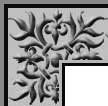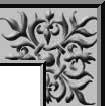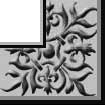

INDEXReading Revolutions: Ideas for Teaching
Learning Activities: Time LinesI Hate Dates
One of the hardest things for students is the memory of dates. But it is important to be able to relate events to time to see mutual and causal influences. One way to help the students see progressions is to produce a timeline of the period studied.
Kurt Lewin in his theory of the Life Space said that one of the prime changes in an adolescent's life is the lengthening of their sense of history. He hypothesized that as the adolescent's sense of the past lengthened beyond their personal experience, their sense of the future would also lengthen. Time is not a natural concept, like length, but to achieve accurate estimates both must be experienced. Remember how long a two hour drive was when you were young? Lewin thought that was because children don't have enough experiences of time spans to judge the passage of time.
Lewin thought that history was an important subject for mid-childhood and adolescence, not only for the usual cultural reasons, but to ground them psychologically with past generations and thus with future generations. When teaching dates and using timelines or other methods, it's important to remember the underlying reasons and that the dates are a means to an end. If the student has a sense of time, they are more likely to develop concepts of causation, be able to see inter-relationships, and apply what they learn to both the present and the future.
The timeline should be produced as the class is taught. If your classroom has a printer, it's easy to use very large letters and write a simple event title on a piece of typing paper. The date should be written on the back. The timeline can grow along a wall as the unit progresses. When you run out of space, have the students choose the most important event in the period timeline and add that to a second Master Timeline either above the first on the same wall or on another wall. The rest of the items can be taken down and stored. You then begin a new period timeline.
One of the most important things to keep constant is the scale. Wrap the timeline around the room, if necessary, to avoid bunching dates. If you have the right situation, you could take the kids outside and have them create their own scale using tape measures. Get several 50 foot measures and let them spread out. 1492 should barely be able to see the year 2000 + *.
Review
To use the timeline for review, take out the old detailed timelines and choose an appropriate number from different periods and have the students order them. This can be done in teams or you can pass them out randomly and each student can have a sheet. These timeline sheets shouldn't have their dates included on the back. The students should work together to form a line in the order of the timeline. They should have resources so that they can look up items when there is debate.
Guessing Games
With older students (seventh grade and up) you can have them play guessing games. Again each student is given an event with the date. They tell their classmates the date and then describe what happened before and after the event on their timeline so the students can guess the event. You can either include or exclude the "major" dates from the Master Timeline.
With younger students, you can staple the timeline events to sticks to make picket signs that they can carry as they line up according to event.
If you have very detailed timelines and you are in the second half of the year, you may want to change the game to an era game. Again, working in teams, the students must place events in 25, 50, or 100 year timespans. While arbitrary, it will help them understand the flavor of the 1700's versus the 1200's.
In any of the games, the emphasis should be on encouraging the students to explain why they have placed an item at a particular place. Although they might be off in their estimate, they might be using a larger time frame as their reference and so be essentially correct. The point of the exercise is not to remember dates, but to achieve a sense of context.
Marilyn Shea
Professor of Psychology
University of Maine at Farmington

